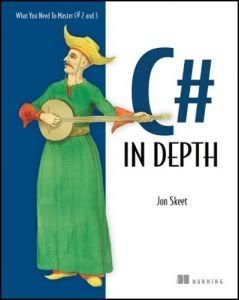Purpose | VB.NET | C# |
Declare a variable | Private, Public, Friend,Protected, Static1, Shared,Dim | declarators (keywords include user-defined types and built-in types) |
Declare a named constant | Const | const |
Create a new object | New, CreateObject() | new |
Function/method does not return a value | Sub | void |
Overload a function or method (Visual Basic: overload a procedure or method) | Overloads | (No language keyword required for this purpose) |
Refer to the current object | Me | this |
Make a nonvirtual call to a virtual method of the current object | MyClass | n/a |
Retrieve character from a string | GetChar Function | [] |
Declare a compound data type (Visual Basic: Structure) | Structure End Structure | struct, class, interface |
Initialize an object (constructors) | Sub New() | Constructors, or system default type constructors |
Terminate an object directly | n/a | n/a |
Method called by the system just before garbage collection reclaims an object7 | Finalize | destructor |
Initialize a variable where it is declared | Dim x As Long = 5 Dim c As New _ Car(FuelTypeEnum.Gas) | // initialize to a value: int x = 123; // or use default // constructor: int x = new int(); |
Take the address of a function | AddressOf (For class members, this operator returns a reference to a function in the form of a delegate instance) | delegate |
Declare that an object can be modified asynchronously | n/a | volatile |
Force explicit declaration of variables | Option Explicit | n/a. (All variables must be declared prior to use) |
Test for an object variable that does not refer to an object | obj = Nothing | obj == null |
Value of an object variable that does not refer to an object | Nothing | null |
Test for a database null expression | IsDbNull | n/a |
Test whether a Variant variable has been initialized | n/a | n/a |
Define a default property | Default | by using indexers |
Refer to a base class | MyBase | base |
Declare an interface | Interface | interface |
Specify an interface to be implemented | Implements (statement) | class C1 : I1 |
Declare a class | Class | class |
Specify that a class can only be inherited. An instance of the class cannot be created. | MustInherit | abstract |
Specify that a class cannot be inherited | NotInheritable | sealed |
Declare an enumerated type | Enum End Enum | enum |
Declare a class constant | Const | const (Applied to a field declaration) |
Derive a class from a base class | Inherits C2 | class C1 : C2 |
Override a method | Overrides | override |
Declare a method that must be implemented in a deriving class | MustOverride | abstract |
Declare a method that can't be overridden | NotOverridable (Methods are not overridable by default.) | sealed |
Declare a virtual method, property (Visual Basic), or property accessor (C#, C++) | Overridable | virtual |
Hide a base class member in a derived class | Shadowing | n/a |
Declare a typesafe reference to a class method | Delegate | delegate |
Specify that a variable can contain an object whose events you wish to handle | WithEvents | (Write code - no specific keyword) |
Specify the events for which an event procedure will be called | Handles (Event procedures can still be associated with a WithEvents variable by naming pattern.) | n/a |
Evaluate an object expression once, in order to access multiple members | With objExpr <.member> <.member> End With | n/a |
Structured exception handling | Try Catch
Finally
End Try | try, catch, finally, throw |
Decision structure (selection) | Select Case ..., Case, Case Else, End Select | switch, case, default, goto, break |
Decision structure (if ... then) | If ... Then, ElseIf ... Then, Else, End If | if, else |
Loop structure (conditional) | While, Do [While, Until] ..., Loop [While, Until] | do, while, continue |
Loop structure (iteration) | For ..., [Exit For], Next
For Each ..., [Exit For,] Next | for, foreach |
Declare an array | Dim a() As Long | int[] x = new int[5]; |
Initialize an array | Dim a() As Long = {3, 4, 5}
| int[] x = new int[5] { 1, 2, 3, 4, 5}; |
Reallocate array | Redim | n/a |
Visible outside the project or assembly | Public | public |
Invisible outside the assembly (C#/Visual Basic) or within the package (Visual J#, JScript) | Friend | internal |
Visible only within the project (for nested classes, within the enclosing class) | Private | private |
Accessible outside class and project or module | Public | public |
Accessible outside the class, but within the project | Friend | internal |
Only accessible within class or module | Private | private |
Only accessible to current and derived classes | Protected | protected |
Preserve procedure's local variables | Static | n/a |
Shared by all instances of a class | Shared | static |
Comment code | '
Rem | //, /* */ for multi-line comments
/// for XML comments |
Case-sensitive? | No | Yes |
Call Windows API | Declare | use Platform Invoke |
Declare and raise an event | Event, RaiseEvent | event |
Threading primitives | SyncLock | lock |
Go to | Goto | goto |
 Jon Skeet “C# in Depth: What you need to master C# 2 and 3"
Jon Skeet “C# in Depth: What you need to master C# 2 and 3"  Photography
Photography